Changing the landscape: inquest into the disappearance of Ben Dominick
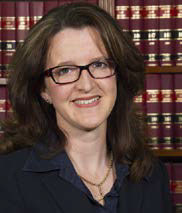
It was an inquest that involved a disappearance, a suspected homicide, a hostile and isolated terrain, effluxion of time and multiple questions unanswered. The challenging circumstances led the State Coroner, Magistrate O’Sullivan, and Counsel Assisting to alter orthodox coronial processes for the inquest into the disappearance of Ben Dominick in 2020.
The resulting novel approach was both forensically and professionally rewarding. It is an example of how adapting processes in the coronial jurisdiction can enhance both the core and therapeutic functions of the jurisdiction.
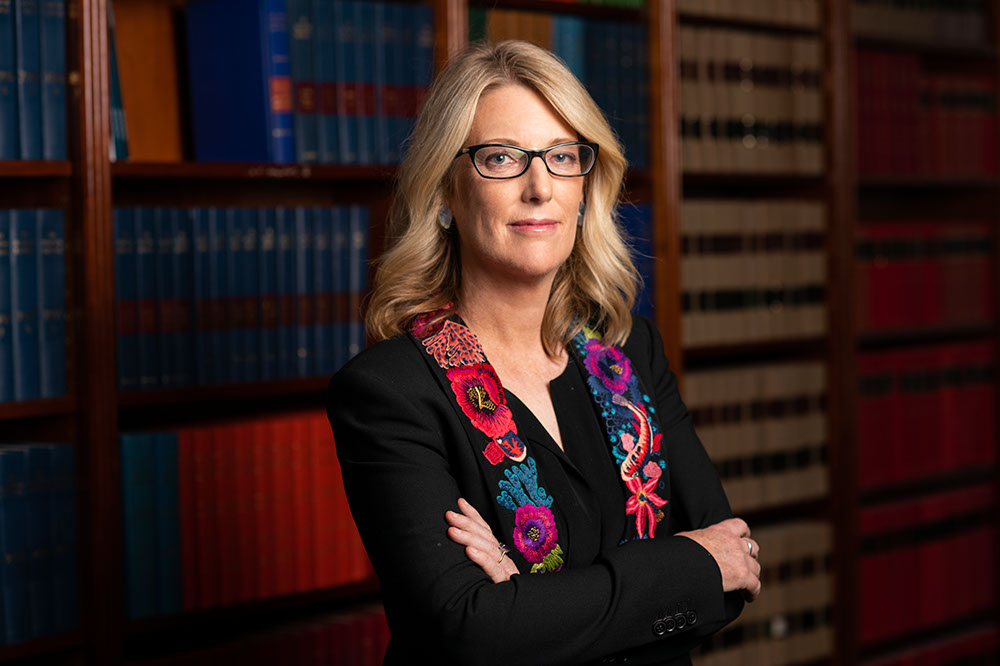
Here, Kirsten Edwards (KE), who was Counsel Assisting, explains the approach that was taken, and provides insights.
On Saturday 10 January 2015, Ben Dominick and his brother, Tim, took Ben’s green Ford Falcon sedan to the Coocoran Opal Fields, 20 kilometres outside Lightning Ridge, to work – as they frequently did – for a local mine operator, 'washing dirt' by using a mechanical agitator to detect opals.
'The Coocoran' contains approximately 5,000 open mining shafts located around small bush-style dwellings, with leases for land holdings held by individuals, entitling them to live, build and mine their lease area. It is arid and isolated, and in January 2015 daily temperatures were in the high 30°Cs.
Ben – his family preferred 'Ben' to 'Mr Dominick' – told his partner, Ashleigh, and three young children, he would see them Sunday afternoon or Monday morning. He took frozen food, beer and ice and food for his chickens, which he kept at Tim’s Coocoran leasehold. Various people saw Ben at the Coocoran on 10 January, drinking and riding on a quad bike. He became agitated and upset in an argument with Tim and left in his car.
On 13 January, Tim and Ashleigh reported Ben missing to police. Some hours later, his car was found at an electrical substation in Lightning Ridge – 30 kilometres from where he was last seen – parked in third gear. The windows were down, it was unlocked, the keys were in the ignition and the radio was missing. The petrol tank had fuel, and the driver’s seat was positioned as for a tall person. Ben’s wallet, food, loose cash, hunting knife and phone were in the car, together with a pouch of tobacco of a brand he did not smoke.
These, and a reported sighting of Ben’s car on 12 January 2015, were essentially the only clues to Ben’s disappearance.
Following an inquest, in June 2020 the State Coroner found that Ben died on or shortly after 10 January 2015, but her Honour could not make findings on the manner or cause of his death. Homicide remains a real possibility, and neither misadventure nor suicide could be excluded.
A core function of the coronial jurisdiction is to investigate such unexplained and suspicious deaths. But the task for this inquest was particularly difficult. The terrain of Lightning Ridge is unforgiving and expansive. Witnesses’ recollections were hampered by the passage of time and lifestyles which involve routine alcohol consumption and relative lack of structure. Most witnesses were unfamiliar with or uncomfortable in a courtroom setting. It was necessary to consider problems in the police investigation yet imperative, if progress was to be made in examining Ben’s disappearance, that police officers felt enabled to assist to the best of their ability.
Kirsten Edwards describes the challenges confronting inquests generally, which were heightened in this case:
'Inquests involve people going through a very traumatic experience. They come into our world, our culture, our norms. Court is a very foreign and alienating environment for a lot of people. We need to work to engage with people on their terms and that is what was on our minds in Ben Dominick’s inquest. And, ultimately our approach was forensically beneficial because we gained a much greater insight into what happened.'
The State Coroner and Edwards decided that the best prospect of advancing the aims of the inquest was to adduce evidence from witnesses in 'walkthroughs' of locations, in a re-creation which was as close as possible to Ben’s steps before he disappeared. The court participants – State Coroner, counsel, officers, witnesses, and others – took cars in convoy and stopped at various points to take oral evidence.
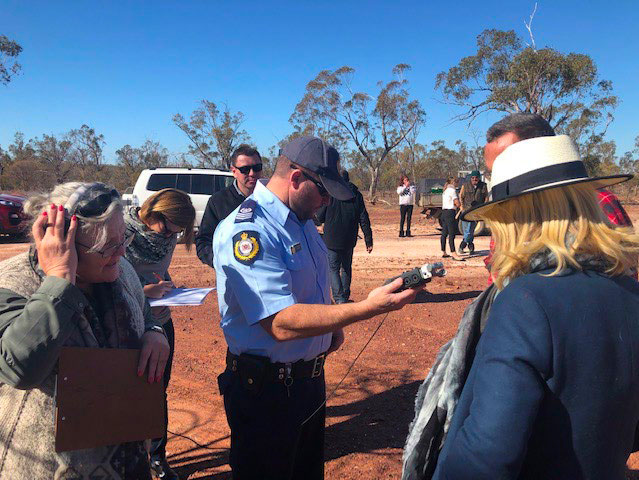
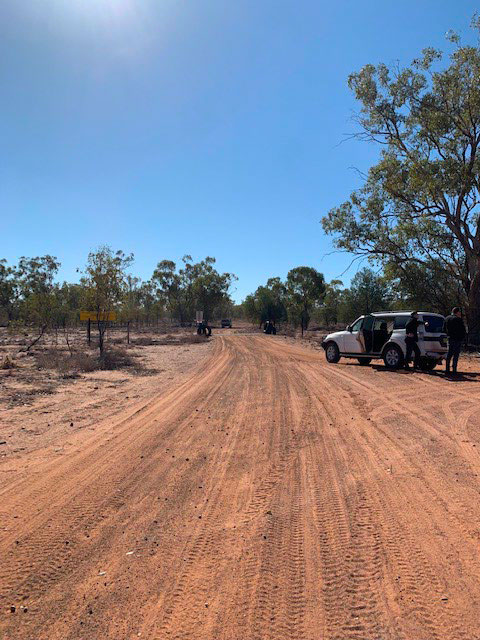
KE: 'We stopped on the way to the opal fields, to recreate steps that Ben took. We interviewed people who had seen Ben on the way out. Here, the oath is being taken from a witness, with the sheriff’s officer holding the microphone. The court monitor is checking the sound, and the solicitor assisting and counsel [Ryan Coffey] and solicitor for the NSW Police Commissioner can be seen behind the sheriff’s officer.
The unusual approach would not have worked without the active participation and assistance of the court staff and the representatives of NSW Police. I was extremely grateful for the enthusiasm that everybody brought to the experience.
Properly capturing sound outside was difficult – the technology was mostly fine but at times it dropped out and the wind meant some of what was said wasn’t recorded. My incredible solicitor had to recreate some of the transcript from notes hastily scribbled at the scene. Lesson learned: have a backup recording on an iPhone, with the Coroner’s permission.'
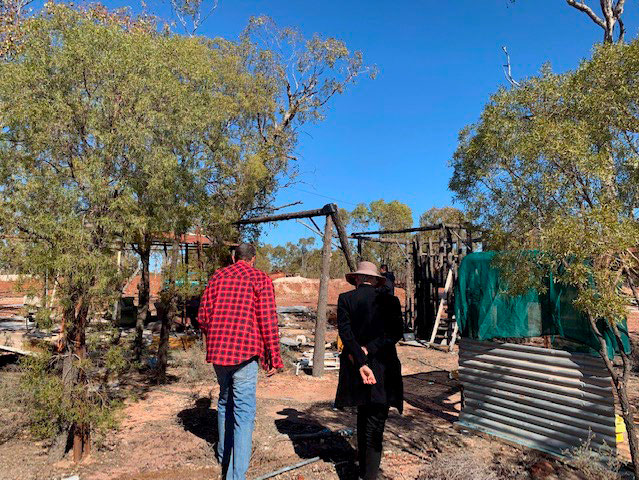
'On our way to the opal fields a witness identified a point of interest - this became one of the utilities in taking the evidence this way. It was very hard to understand the terrain from descriptions in statements. Going out and having witnesses identify points of interest helped – and in this instance, it refreshed the witness’s memory about particular things enough for him to stop and speak about it.'

KE: 'These are photos of the State Coroner in one and me in the other examining what is left of Ben’s camp at the opal fields. It has changed a lot since 2015, but it gave us an insight into how he lived and what the lifestyle might have been like.'
KE: 'The landscape at the Coocoran: one reason why missing persons in the Lightning Ridge area have to be treated in a special way. There are disused mining holes everywhere, and some go down a long way. The police had looked in many but keeping track of which had been checked was confusing. Incidentally, Ben had worked out a way to hook into some of the underground air and direct it into the camp as an air conditioner.'
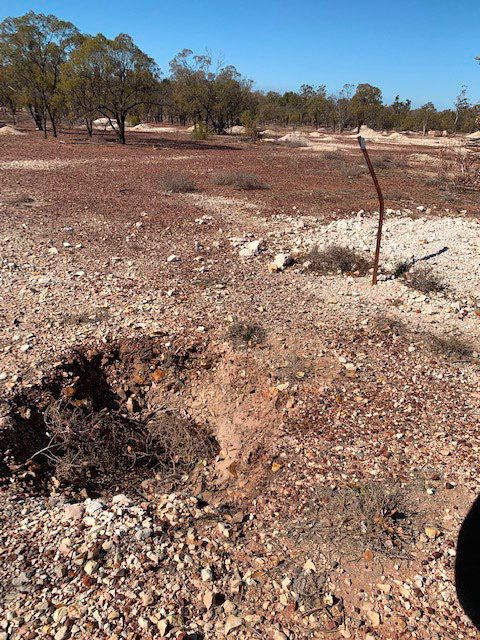
On this, the State Coroner’s findings noted that 'Ben also ingeniously, albeit possibly dangerously, managed to construct an air-conditioning unit at his camp by redirecting cool air to the surface from the mine shafts below.'
In the courtroom, it was decided that a format which deliberately broke down some possibly inhibiting formalities would provide a better chance of useful engagement by witnesses and parties. A round table approach was adopted for a number of witnesses whose evidence was not controversial, in which the State Coroner sat with the witness, Counsel Assisting, counsel for the Commissioner of Police and others to conduct the inquiry.
KE: 'This photo is actually a re-creation of the roundtable session with our Officer in Charge who had done an excellent investigation and had the essential local knowledge to make our experiment work. It is an illustration of what it looked like to have round table evidence from witnesses.

The State Coroner ended up asking a lot more questions than if she was on bench, and said she felt more part of the process and that her interventions came across as less intimidating. This all meant it was easier for her to pursue lines of inquiry that were of interest to her – which is appropriate for an inquest. In this format it also felt more natural to go around the table asking questions. The witnesses could see it was the Coroner’s inquiry, with counsel assisting literally her right-hand person.'
Overall, the high quality of the evidence obtained was encouraging for future prospects of coronial processes being adapted, so far as might be appropriate in each case, to minimise the inhibitions which may otherwise preclude a coronial inquiry from progressing forensically as far as reasonably possible. It also aided therapeutic aspects of the jurisdiction, by demonstrating to Ben’s family real effort by those involved to gain a proper understanding of his life and lifestyle, and disappearance.
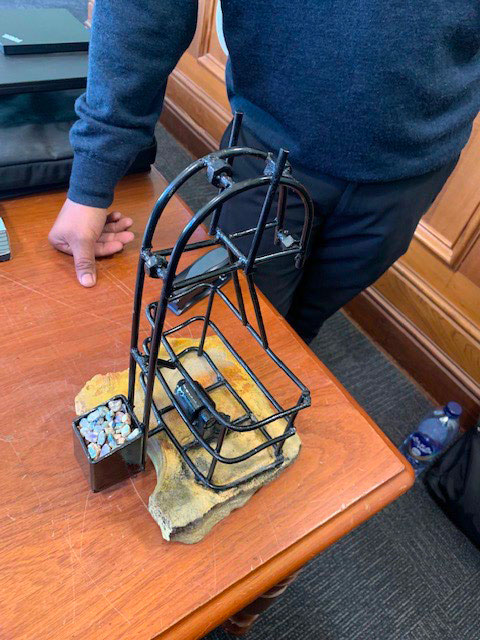
KE: 'This is a gift from the family showing appreciation to the State Coroner taking the time to understand how they lived and worked. This is a sculpture of opal mining equipment and the small rocks are real opals. The sculpture was kept on the bench when the State Coroner delivered her findings.'
Overall, Edwards describes this inquest as 'one of the most professionally satisfying experiences of both State Coroner and Counsel, an extraordinary learning experience about how to get the best evidence from people in a therapeutic way.'
The particular approach adopted in the inquest into the disappearance of Ben Dominick will not be optimal in every case, or even in many cases. However, it provides an example of how procedural necessities – such as procedural fairness and open justice – may be able to be accommodated within a framework which also optimises witnesses providing their best evidence to a coroner whose function it is to solve unexplained deaths and disappearances in the protection of society.
*Authority to use images expressly provided by the State Coroner.
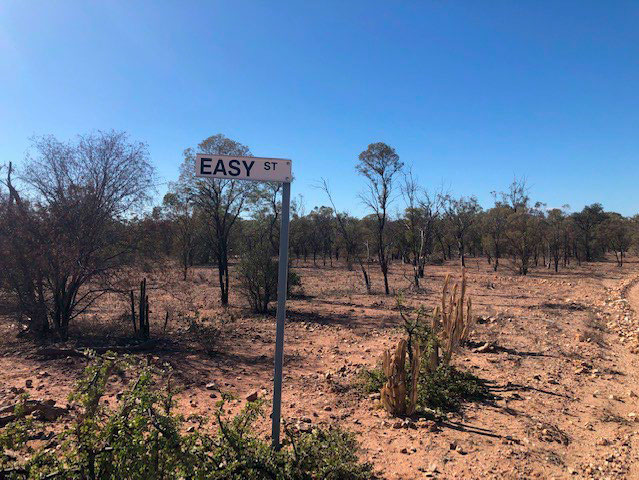
“Not crucial to the inquest” – but photo-worthy